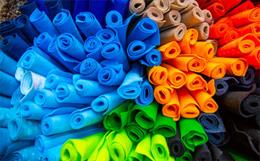Over 13 million healthcare personnel includingphysicians, assistants and nurses are employed in homes, hospitals andemergency medical services in the United States of America. Personal protectivegear can stand between them and disease; say
Healthcarepersonnel deliver care directly or indirectly to patients infected withpandemic diseases like SARS (Severe Acute Respiratory Syndrome), AIDS (AcquiredImmune Deficiency Syndrome), avian influenza (bird flu), H1N1 (swine flu), andmultidrug-resistant tuberculosis.
They alsoprevent further spread of these infectious diseases. It is necessary forhealthcare personnel to wear Personal Protective Equipment (PPE) to limitmorbidity and mortality of patients in their care, as well as themselves, theirfamily members, and other members of the community to prevent a pandemic'slarger societal progression.
In thelast few decades, the transmission mechanisms of pandemic infectious pathogensfrom a patient to healthcare personnel have been thoroughly investigated todevelop PPE. Through these investigations, it has been found that infectiouspathogens can be transferred to healthcare personnel through their respiratoryorgans and dermis via air and liquids (water, blood etc.), and through mucusmembranes (eyes etc). Thus, respiratory, dermal and mucus membrane protectionare essential for healthcare personnel.
Consequently,different types of PPE have been developed and made commercially. Commonly usedPPE include medical masks, respirators, gloves, gowns and eye protectors. Someother types of PPE, such as face shields, are also occasionally used byhealthcare personnel. Among these, respiratory (medical masks, respiratorsetc.) and dermal (gloves, gowns etc.) protective equipment are primarilytextile-based and used regularly by healthcare personnel.
In thefollowing sections, respiratory and dermal protective equipment for healthcarepersonnel are critically discussed, and further research needs in the field ofrespiratory and dermal protective equipment are highlighted to help textile ormaterial engineers to develop high-performance respiratory and dermalprotective equipment for better occupational health and safety of healthcarepersonnel.
Respiratory protective equipment
In amedical institution, healthcare personnel need to wear different types ofrespiratory protective equipment including surgical masks, dental masks andrespirators. Medical masks are readily available to healthcare personnel andcheaper in cost than respirators. Therefore, the use of medical masks byon-duty healthcare personnel is quite common. However, medical masks are notdesigned to be used to protect healthcare personnel from pandemic infectiousdiseases. They are mainly designed to protect patients from coughing or exhaledsecretions of healthcare personnel. Thus, respirators are preferable for use asrespiratory protective equipment, especially in a healthcare environment thatmay contain pandemic and infectious pathogens.
In the
early 20th century, medical masks were mainly reusable and made from
multi-layered cotton gauze. Due to this multi-layered structure, the protective
efficiency of these masks was high. However, these heavyweight masks affected
breathability and comfort level of wearers who were mostly healthcare
personnel.
By the
mid-20th century, lightweight disposable masks mainly made from a fine glass
fibre nonwoven mat were introduced into the market as a reliable method of
deterring airborne pathogenic microorganisms (e.g., viruses, bacteria and
fungi). By the 1990s, different types of fibres (e.g., polypropylene and
cellulose) were used to produce medical masks.
The
protective efficiency of masks made from different fibre materials vary. From
highest level of protective efficiency to lowest, they are polypropylene,
polyester-rayon, glass and cellulose. Currently, glass fibre is rarely used as
it causes irritation on the wearer's skin. Polypropylene is the most frequently
used fibre because it is both highly hydrophobic in nature and has a capacity
for wicking, ensuring a dry and comfortable microclimate between the mask and
face. Contemporary medical masks are usually composed of three nonwoven fabric
layers-a cover web, a filter layer and a shell fabric. The innermost cover web
is a spun-bonded nonwoven mat and lies next to the wearer's skin. The filter
layer between the cover web and shell fabric is a melt-blown nonwoven mat that
primarily deters hazardous aerosol particles, microorganisms and bodily fluids.
The shell fabric is the outermost layer exposed to the ambient environment.
This fabric is made from a spun-bonded nonwoven mat and supports the filter
layer.
Although
recently developed medical masks can provide effective protection from
comparatively larger airborne microorganisms or hazardous particles released
from coughing and sneezing, the filter layer of these masks does not provide
the same level of protection from inhaling submicron microorganisms or
particles. Additionally, these medical masks were not designed to eliminate air
leakage around the edges. As a result, these masks cannot fully stop spread of
infection among healthcare personnel if they are exposed to patients of
pandemic infectious diseases like SARS, influenza and AIDS.
Considering
the shortcomings of existing medical masks, in the late 20th century,
air-purifying particulate respirators were developed for healthcare personnel.
These respirators use protective textile fabric that is efficient in filtering
any microorganism and designed to eliminate air leakage around the edges. While
wearing these respirators, it is always recommended to use nose clips that can
be adjusted to conform to the contour of a wearer's face. This can help to
minimise leakage of microorganisms or hazardous particles between the mask and
face.
Conventionally, these respirators are mainly composed of four or five nonwoven fabric layers. In this case, two or three layers of nonwoven filters are sandwiched between a polypropylene nonwoven cover web and shell fabric. These filter layers are made of closely packed ultrafine polypropylene fibre-based melt-blown nonwoven fabric. As an additional upgrade, these filter layers are sometimes made from combining polypropylene and electret fibres that carry an electric charge. These electret fibres can capture hazardous particles and microorganisms via electrostatic attractions. This result in a higher level of protective efficiency for electret fibre filter layers compared to standard polypropylene filter layers. In fact, by adding electret fibres, filter layers become less densely packed without compromising on protective efficiency. This less dense structure can provide more breathability and comfort to wearers. However, it is important to note that the efficiency of electret fibres may degrade over time when exposed to aerosols, making the respirator less efficient.
At
present, respirators are standardised and classified by National Institute for
Occupational Safety and Health (NIOSH) according to their filtering efficiency
and protection capacity against oil aerosols. Based on filtering efficiency,
filter classifications are labelled as 95, 99, and 100, which can deter 95 per
cent, 99 per cent, and 99.97 per cent (essentially 100 per cent) respectively
of exposed aerosols. Generally, these three filter efficiency levels are tested
using the most penetrating particle size, i.e., about 0.1-0.3µm aerodynamic
diameter. Considering the capacity of protection against oil aerosols, the
respirators can be classified into N, R, and P types. Respirators are rated N
if they are not resistant to oil, R if somewhat resistant to oil, and P if
strongly resistant to oil. If a respirator is given an alphanumerical code of
P100, this indicates that it can filter 99.97 per cent of airborne particles
and is strongly resistant to oil. It is notable that healthcare personnel
commonly use N95 respirators because they are disposable (so do not require any
cleaning and maintenance), inexpensive, and easy to use.
Based on
the above, while different types of respirators with different levels of
efficiency are commercially available, this does not eliminate the risk of
healthcare personnel exposure to airborne microorganisms. This is because the
existing respirators may not be ideal to sufficiently protect from airborne
microorganisms, i.e., emerging new pandemic infectious diseases (such as Ebola)
worldwide. Additionally, a respirator should properly be fitted to wearers,
both to prevent inhaling microorganisms and for comfort. Furthermore, many
pathogenic microorganisms that become trapped within the fibrous materials of
respirators can survive for an extended period, even after respirator disposal.
The mechanical handling of these respirators has a high probability of transfer
of these trapped microorganisms to other media and can pose a risk of secondary
infection.
Dermal protective equipment
Healthcare
personnel have to use their hands for most, if not all, routine work from
providing treatment and handling related equipment to changing patients'
clothes, documenting treatment etc. As a consequence, their hands are at high
risk to come into contact with bodily fluids that may contain pathogenic
microorganisms.
In order
to prevent the transfer of liquid-borne microorganisms, since 1890 it has been
standard practice for healthcare personnel to wear sterilised medical gloves.
In the last few decades, a great deal of improvement has occurred in the
production of medical gloves. Presently, medical gloves are generally made of
different water-repellent textile polymers (typically made of latex, nitrile
rubber, vinyl, or neoprene) which can protect healthcare personnel from direct
contact with contaminated liquids. In general, these gloves can be classified
into exam gloves and surgical gloves. Exam gloves are usually lubricated with
cornstarch to make them easy to put on and comfortable to wear. Surgical
gloves, however, are not lubricated, as cornstarch may be absorbed by patients
during surgery tissues and impede their healing. While this is an important
consideration, surgical gloves should be more precise with regards to the fit
and/or size of the wearer to provide the utmost protection to healthcare
personnel and patients.
Along with
the hands, other body parts of healthcare personnel may also come into contact
with contaminated liquids. In order to prevent the transfer of pathogens, the
use of medical gowns by healthcare personnel has been in practice since the
early 19th century. These gowns usually consist of a long piece of cloth,
fastened at the back with twill tape ties. Traditionally, medical gowns are
white, representing purity and goodness. However, surgery gowns are often green
or blue, which can help to refresh the doctors' vision during surgery.
Disposable medical gowns are made of paper and/or thin plastic, and reusable
medical gowns are generally made of natural (e.g., cotton) and/or synthetic
(e.g., polyester) fibres. The fibres are converted into yarn through a spinning
process, and then woven into fabric. Finally the fabric is converted into
medical gowns.
It is a
primary requirement that the fabric for medical gowns should be waterproof and
breathable (water vapour permeable) in order to provide better protection and
comfort for healthcare personnel. A waterproof, breathable fabric can be
engineered by using: (1) tightly woven (half-basket, plain, or twill weave)
fabrics with a water-repellent (silicone or fluorochemical) finish; (2)
microporous (pore size <2-3µm) membranes or coatings (polyurethane,
polytetrafluoroethylene, acrylics, or polyamino-acid) on cotton nonwoven
fabrics; (3) hydrophilic membranes or coatings (such as polyurethane-based
thermoplastic elastomer); and (4) smart or intelligent polymers (shape memory
polyurethane, or cotton fabric coated with N-tert-butylacrylamide-ran-acrylamide).
Along with these functionality requirements, it is also necessary that the
fabric used in medical gowns should not promote the growth of any trapped
infectious microorganisms; this specification can prevent the risk of secondary
infections to healthcare personnel when reusing the gowns. To this purpose,
antimicrobial finishes (e.g., silver/metal compound finish, quaternary ammonium
compounds finish, N-halamines finish) are often applied to fabrics used to
produce reusable medical gowns.
In
summary, there are various techniques to produce waterproof, breathable, and
antimicrobial fabrics for medical gowns. In selecting a particular technique,
it is important to consider (1) the physical and chemical properties of the
needed fabric, including thickness, pore size, and water repellence; (2) the
shape, size, and other characteristics of pathogenic microorganisms, such as
their morphology, motility, and adaptation to environmental temperatures; (3)
the key characteristics (surface tension, volume, and viscosity) of the liquid
carriers of the microorganisms; and (4) the external factors that make up the
environment of healthcare personnel, the most pertinent of which are physical, chemical, and
thermal stress.
Further insights
Health
organisations and administrators should prioritise educating healthcare
personnel about the importance of respiratory and dermal protective equipment
in sensitive work situations or environments. Personnel should also be properly
trained regarding the donning and doffing of respiratory and dermal protective
equipment while on duty.
There is a
growing need to develop new respirators and gowns that provide effective
protection from newly originated infectious diseases such as Ebola and other
pathogens. There is also a need to technically redesign and rate the size and
fit of respirators and gowns by taking face structure, anthropometry, and
wearers' comfort into greater consideration. Finally, newly developed
respirator and gown materials should not generate any kind of secondary infection
risk.
It is
expected that newly developed high-performing respirators and gowns should
provide better protection and comfort for healthcare personnel.
References
1.
Goldfrank, L. R., & Liverman,
C. T. (2007). Preparing for an influenza pandemic: personal protective
equipment for healthcare workers. The National Academic Press, USA.
2.
Cdc.gov/tb/publications/factsheets/prevention/rphcs.htm
3.
Ccohs.ca/oshanswers/prevention/respiratory-protection.html
4.
Zhong, W. (2013). An introduction
to healthcare and medical textiles. DEStech Publications Inc., USA.
5.
Johnson, D. F., Druce, J. D.,
Birch, C., & Grayson, M. L. (2009). A quantitative assessment of the
efficacy of surgical and N95 masks to filter influenza virus in patients with
acute influenza infection. Clinical Infectious Diseases, 49(2), 275-281.
6.
Derrick, J. L., & Gomersall, C. D. (2005).
Protecting healthcare staff from severe acute respiratory syndrome: filtration
capacity of multiple surgical masks. The Journal of Hospital Infection, 59(4),
365-372.
7.
Belkin, N. L. (1997). The
evolution of the surgical mask: filtering efficiency versus effectiveness.
Infection Control and Hospital Epidemiology, 18(1), 49-57.
8. Madsen,
P. O., & Madsen, R. E. (1967). A study of disposable surgical masks.
American Journal of Surgery, 114(3), 431-435.
9.
Chen, C. C., & Willeke, K.
(1992). Aerosol penetration through surgical masks. American Journal of
Infection Control, 20(4), 177-184.
10. Vanturnhout,
J. V., Adamse, J. W. C., & Hoeneveld, W. J. (1980). Electret filters for high-efficiency air cleaning Electret
filters for high-efficiency air cleaning Electret filters for high-efficiency
air cleaning Electret filter for high efficiency cleaning. Journal of
Electrostatics, 8(4), 369-379.
11. Moyer,
E. S., & Bergman, M. S. (2000). Electrostatic filter media efficiency
degradation resulting from intermittent sodium chloride aerosol exposure.
Applied Occupational and Environmental Hygiene, 15(8), 600-608.
12. Cdc.gov/niosh/npptl/topics/respirators/disp_part/respsource3healthcare.html#e
13. Infectioncontroltoday.com/articles/2012/06/respiratory-protection-compliance-research-are-key-issues-for-the-future.aspx
14. Osborne,
M. P. (2007). William Stewart Halsted: his life and contributions to surgery.
The Lancet Oncology, 8(3), 256-265.
15. Slideshare.net/latexglovesgloves/history-of-medical-gowns
16. Mukhopadhyay,
A., & Midha, V. K. (2008). A review on designing the waterproof breathable
fabrics part I: fundamental principles and designing aspects of breathable
fabrics. Journal of Industrial Textiles, 37(3), 225-262.
17. Mukhopadhyay, A., & Midha, V. K. (2008). A
review on designing the waterproof breathable fabrics part II: construction and
suitability of breathable fabrics for different uses. Journal of Industrial
Textiles, 38(1), 17-41.
18. Cdc.gov/niosh/npptl/topics/protectiveclothing/
19. Cdc.gov/vhf/ebola/hcp/ppe-training/
About the authors:
Sumit Mandal is with Department of Human Ecology, University of Alberta, Canada and Guowen Song is with Department of Apparel, Events, and Hospitality Management (AESHM), Iowa State University, USA.








